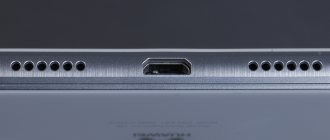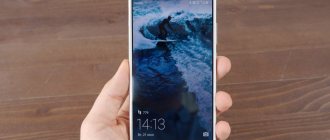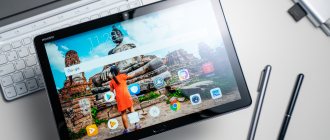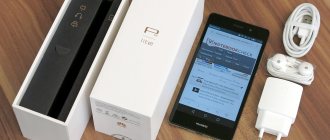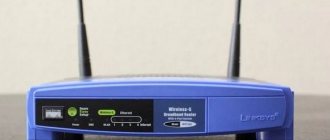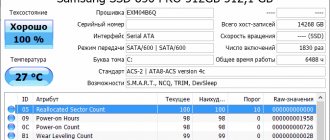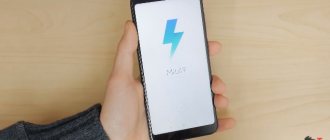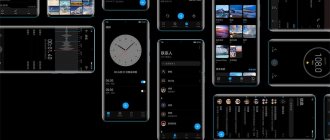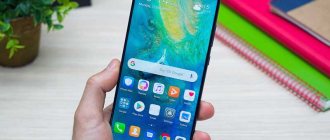Specifications
- Operating system: EMUI 4.1 (Android 6.0 Marshmallow)
- Screen: 5.5 inches diagonal, AMOLED, 1920×1080 pixels, 401 ppi, 2.5D, Press Touch
- Processor: Huawei Kirin 955, 64 bit, 8 cores (4 x 2.5 GHz Cortex-A72 + 4 x 1.8 GHz Cortex-A53)
- Graphics: ARM Mali-T880 MP4
- RAM: 4 GB
- Storage memory: 64 GB, microSD (up to 128 GB)
- Main camera: 12 MP (f/2.2) + 12 MP (f/2.2), dual flash, laser autofocus, video [email protected]
- Front camera: 8 MP (f/1.8), video [email protected]
- Networks: LTE (FDD: Band 1/2/3/4/5/6/7/8/12/17/18/19/20/26/28; TDD: Band 38/39/40/41), 3G (800/850/900/1900/2100 MHz), 2G (850/900/1800/1900 MHz), DualSIM (nano-SIM)
- Interfaces: Wi-Fi (a/b/g/n/ac, 2.5/5.0 GHz), Bluetooth 4.2, NFC, USB Type C, IrDA, 3.5 mm headset
- Navigation: GPS (A-GPS), GLONASS, BDS
- Sensors: light, proximity, gyroscope, compass
- Battery: 3400 mAh
- Dimensions: 152.3×75.3×7.0 mm
- Case materials: metal, glass
- Weight: 162 g.
Huawei P9 Plus - Review of an expensive phablet with three wow-cameras
Key Features of Huawei P9 Plus
| Screen | AMOLED, 5.5″, 1080×1920, , multi-touch 10 touches, 2.5D, gloves |
| Iron | Hisilicon Kirin 955, 4 cores Cortex-A72 2.5 GHz + 4 cores Cortex-A53 1.8 GHz, Mali-T880MP4 |
| Memory | RAM 4 GB, ROM 64 GB, Micro-SD up to 128 GB (instead of one of the SIMs) |
| Mobile Internet | LTE cat.6 300/50 Mbit/s HSDPA, HSUPA EDGE |
| Mobile networks | LTE Bands 1-8,12,17-20,26,28,38-41 UMTS 850, 900, 1900, 2100 GSM 850, 900, 1800, 1900 |
| Battery | Li-Pol, 3400 mAh, 141% of standard |
| Dimensions | 152.3 x 75.3 x 6.98 mm |
| Weight | 162 g |
| Camera | 2 x 12 MP, flash, laser autofocus, f/2.2 front: 8 MP, autofocus, f/1.9 |
| Navigation | GPS, A-GPS, GLONASS |
| OS | Android 6.0 Marshmallow, EMUI 4.1 |
| SIM | 2 x Nano |
| Price | 49990 rub. |
Meet me. Huawei P9 Plus. Expensive phablet. Fifty thousand rubles and five and a half inches.
What is the current flagship smartphone? Excellent screen processor, lots of memory. Goodies such as fingerprint sensors, fast charging, IR ports, etc., are nice and useful, but not really necessary. And a camera. Nowadays, a flagship can’t go anywhere without a cool camera.
Both older P9 (and P9 Plus) are typical flagships with an emphasis on photos. Collaboration with LEICA, dual cameras, laser autofocus, RAW shooting.
Did Huawei manage to do everything competently and correctly? In my opinion, yes. The photographs are pleasing to the eye. The phone probably won’t replace a cool DSLR yet (fortunately, some laws of physics are difficult to surpass). And compared to an average camera, there’s already something to think about. Everything else (processor, screen, gadgets) is also in place and at the proper level.
Only two things confuse my soul. The first is, of course, the price. The second is the specific behavior of the software of Huawei smartphones - problems with notifications and the incomprehensible disappearance of running programs from memory. I already talked about this in the Huawei P9 lite review (at the very beginning), I won’t repeat it. Everything is the same here, only even more offensive, because... The device is significantly more expensive. Huawei support, alas, is still silent.
Otherwise, everything is fine, beautiful marquise.
Equipment
Only the smartphone itself came to me plus a USB Type-C cord. Therefore, I can’t say anything about the official delivery package.
Appearance
| Weight | 162 g |
| Size | 152.3 x 75.3 x 6.98 mm |
| Protection | No |
Slippery and thin. So be careful, repairing broken glass is so expensive these days.
Three colors - gold (like mine), gray (“coming soon” at MTS), black (not yet seen in our country).
Glossy, but neat (at least the gold one). There are prints, but they are barely noticeable.
The body is metal, non-separable. The card tray is traditionally pushed out of the housing using a paper clip. The tray, alas, is combined - either two Nano-SIMs, or one SIM card and one Micro-SD memory card.
In nature, there is a single-SIM variety of P9 Plus - VIE-L09 (not officially supplied to our country). At least there, I want to believe, the tray is not combined.
The metal on the back surface is either not very durable, or the previous tester of my copy was not particularly careful. There is a decent dent and a few scratches on the back of the case.
Boring details about appearance
Above the screen there is a front camera, sensors, a speaker, and a dim LED.
Under the screen there is the inscription HUAWEI and nothing more. Android on-screen buttons.
Rear Everything interesting is at the top. A narrow piece of glass, under it are the lenses of two cameras, laser autofocus, the inscription LEICA and some other small letters. There is also a flash; a hole has been made for it in the glass.
Under the glass there is a finger sensor, it is already on the metal part of the case.
Top edge. Noise canceling microphone and IR transmitter.
Bottom. Main microphone, loud speaker, 3.5 mm audio output and USB Type-C.
On the right are the traditional buttons - volume rocker and power.
On the left is a tray for SIM cards and memory cards.
Internals (iron)
| AnTuTu | 98955 (v6.1.4) |
| AnTuTu | 81566 (v5.7.1) |
| Chipset | HiSilicon Kirin 955 |
| Cores | 4 x Cortex-A72, 2.5 GHz 4 x Cortex-A53, 1.8 GHz |
| GPU | Mali-T880MP4 |
| RAM (free) | 4 GB (2 GB) |
| ROM (free) | 64 GB (52 GB) |
| Micro-SD | Up to 128 GB |
Powerful processor of our own production. So powerful that you don’t even need more power, it seems. Everything is perfectly smooth, smooth, and good. Maximum frequency in games and so on.
RAM - wagon. Flash memory is also abundant. And if the supply runs out (let’s say you get too carried away with photographing in RAW), you can use the memory card.
There is a version of the device with 128 GB of flash memory, but it is not officially available to us.
Rich with sensors. Accelerometer, compass, gyroscope, proximity, illumination. Finger sensor, of course. Without fingerprinting, flagships are now nowhere.
There's a problem with the barometer. The official website claims that it exists. But no programs can detect its existence. Those. either the official website is mistaken, or there is a barometer, but only “for internal needs” (to increase the accuracy of GPS, for example).
Synthetic test results
Communication with the outside world
| 4G | LTE Bands 1-8,12,17-20,26,28,38-41 LTE cat.6 300/50 Mbps |
| WiFi | a/b/g/n/ac, 2.4 + 5 GHz |
| Bluetooth | v4.2, A2DP |
| USB modes | |
| USB-OTG | + |
| MHL | — |
| NFC | + |
Superfast LTE. It’s not that I really need mobile 300 Mbit/s, but the fact of their theoretical availability, of course, warms my soul.
But dual-band Wi-Fi is a useful thing. Fortunately, I still don’t see a single neighbor’s grid in this range.
There is an IR transmitter that allows you to use your smartphone as a TV remote control. What if the batteries in your original remote control run out?
USB Type-C. Oh, that's good! After all sorts of Micro-USB, this is just some kind of miracle!
The transfer speed via the USB cord between the smartphone and the laptop (USB 3.0 port) was about 30 MB/s in both directions. Those. a film of one and a half gigabytes is transferred in a little less than a minute.
Screen
| Matrix | AMOLED |
| Diagonal | 5.5″ |
| Permission | 1080×1920 |
| Multi-touch | 10 |
| Max white brightness | 350 cd/m2 |
| Min white brightness | 4 cd/m2 |
| Color temp. | 7100-9400K |
| Gloves | Yes |
Naturally, a smartphone that costs so much money has a good screen.
High-quality matrix, high screen resolution, excellent viewing angles, good slippery oleophobic coating. Work with gloves is supported. Slight convexity at the edges (2.5D).
It is possible to adjust the color temperature of the screen.
The maximum brightness when the screen is completely filled with white is not too high - about 350 cd/m2. But the brightness here is dynamic and strongly depends on the image on the screen. For example, if half the screen is black and half is white, then the white brightness will no longer be 350, but as much as 415 cd/m2.
The signature feature is Press Touch, the screen can respond to pressure. If you press it weakly, it will be one thing, if you press it hard, it will be something else. The feature is cool, but not very useful. Because, naturally, so far only what Huawei programmers have programmed works. But they programmed it a little and a little clumsily. Well, the ability to quickly call a regular or selfie camera from one icon is cool. But why is a regular camera called up only in “pro” mode, but in “auto” mode it cannot be called up through this menu? Selected contacts were hung up on the handset - but only three. And I - what a nuisance - have six of them. Well, etc.
Operating system and other software
Operating system Android 6.0 Marshmallow plus EMUI 4.1 shell.
There is a certain amount of pre-installed foreign software, but everything can be easily removed.
More screenshots
Battery
Battery capacity - 3400 mAh. Battery tests gave 141% of the standard. Not bad, but nothing outstanding, no miracles.
As usual, heavy toys burn up the battery the fastest. It is quite possible to “keep within” 4-5 hours. With video everything is much calmer. And 10 hours is not the limit.
Because screen - AMOLED - power consumption depends on the picture. The dark one will not be as gluttonous as the light one. Using the example of HD video (ski racing versus a dark series), the difference will be 10-15 percent.
| Full discharge time | Discharge in an hour | |
| Video | 13:30 | 7.4% |
| Video HD | 11:00 | 9.1% |
| Easy game | 7:50 | 12.7% |
| Hard game | 4:40 | 21.1% |
| Telephone | 19:40 | 5.1% |
| Music | 47:20 | 2.1% |
| GPS on 3G window | 5:40 | 17.6% |
| GPS on Wi-Fi window | 7:00 | 14.2% |
| White screen | 14:10 | 7.0% |
| White screen 100% | 8:20 | 12.0% |
| White screen 0% | 28:30 | 3.5% |
| Internet 3G | 7:30 | 13.4% |
| Internet Wi-Fi | 11:00 | 9.1% |
Huawei P9 Plus as a flashlight
The flashlight is average in power, nothing unusual.
Huawei P9 Plus as a photo and video camera
| Rear: | 2 X 12 MP (3968×2976) |
| Video: | FHD (1980×1080), 60 fps |
| Front: | 8 MP (3264×2448) |
The main camera is double. Essentially, these are two cameras with the same 12 MP resolution. One regular, colored. The other one is black and white. Color works as usual. Black and white is more sensitive and allows you to collect maximum light. The details are complex and are of interest only to professional opticians; for us, amateurs, the only thing that matters is that by processing images taken simultaneously from a color and black-and-white camera, you can get pictures of very good quality. How the algorithms for combining information work is another matter.
In addition to traditional autofocus, there is laser. And yes, everything is great. The camera focuses well and quickly.
What else is good. Of course, everyone always takes photos in automatic mode. But there is also a professional one. Focus, exposure, ISO, white balance, shutter speed - everything can be set manually if you want.
An additional bonus is saving frames in RAW format. (If anyone doesn’t know. In reality, the camera collects more information than is later saved in the final JPG image. And if you save all this extra information, then you can process the shot quite well - change the white balance, play with brightness, even control shadows , well, etc.).
On the good side, shooting in RAW and then processing the resulting images is a very good habit. It is quite possible to seriously improve not the most successful shots. But we must be aware that, firstly, RAW images are wildly large, 20 megabytes each. And besides, the smartphone categorically does not want to save them to a memory card, only to its internal memory.
Plus, secondly, normal people never have time to sit quietly at the computer and process all these photos of themselves. But if you are one of those who are not too lazy to spend a day after a vacation sorting out the accumulated photos, then RAW is, of course, what you need.
Another fun toy is the ability to shoot in “wide aperture” mode. First you take a photograph, and then you indicate what exactly should be in focus and what should be artistically blurred. However, for my taste, this is exactly what a toy is. Have fun once or twice.
Some more photos (find the flying fly)
More photos.
Video examples
Front-camera. Good. And - rarely - with autofocus. In truth, it is better than the main cameras of most modern smartphones (we don’t count flagships and other iPhones, of course). Very impressed. Just don’t play too much with the improver. Although the pictures it produces are funny, of course.
There is no front flash, but the smartphone can display the screen quite well. Here is an example of a photo taken in complete darkness:
A few more photos from the front camera.
Screenshots
Huawei P9 Plus as a GPS navigator
Very smooth tracks. Fast catching of satellites. In short, no problem. If the operating time were longer, it would be an ideal travel smartphone. And so you will have to take an external battery with you on the road.
Huawei P9 Plus as an audio player
Pleasant sound in good headphones. Interesting behavior without headphones. If the smartphone is vertical, only the main loud speaker is used, which is on the bottom edge. If you place the smartphone horizontally, the “conversational” speaker is also connected and they jointly try to create stereo sound.
Huawei P9 Plus as a toy
There are no problems with games. Everything is smooth and smooth even on maximum graphics. Although, of course, the device does heat up quite a bit.
| A game | Problems? |
| Angry Birds Go! | Everything is fine |
| Pitfall! | Everything is fine |
| Shoot The Zombirds | Everything is fine |
| Asphalt 8: Take Off | Maximum graphics |
| Real Racing 3 | Everything is fine |
| NOVA 3 | Everything is fine |
| Need for Speed Most Wanted | 30 seconds of game time = 33 seconds of real time |
| Grand Theft Auto: San Andreas | Maximum graphics. Occasionally there are glitches with rendering |
| Dead Trigger 2 | Maximum graphics |
| Riptide GP2 | Everything is fine |
| FIFA 15 | Everything is fine |
Glitches and other little things
1. I caught a strange glitch. Folder in the internal memory of the smartphone. There are 20 files with the txt extension. I open this folder via MTP - there are 18 files. The missing two files - they exist. I can open them from my smartphone, send them by mail, etc. I waited a day, rebooted the smartphone, rebooted the computer - it didn’t help. I renamed the files and they appeared so cute. I still don’t understand what it was.
2. A fun feature is to take “long screenshots.” Tap the screen twice with your knuckle and press the button. And here it is:
Long screenshot
Total
Eight points out of ten possible. I'm deducting two points for problems with notifications that don't want to arrive. Otherwise, everything is as it should be - before us is a classic, cool, expensive, high-quality flagship phablet.
Photos not included in the review.
Screenshots not included in the review.
Video. First start
Video. Review
Appearance
They did a great job on the design of the Huawei P9 Plus. This model in Russia is presented in a single color, gold. Looks good. The body is made of polished aluminum, shimmers beautifully in the light, and changes its hue under different lighting conditions. There are plastic inserts for the antennas, but they are thin and do not distract attention.
Much better than the same iPhone 6 series with its elaborate “thongs”. The back side and edges have the same texture, the transitions are soft. On the back at the top, under the glass, there are two cameras, a flash with two diodes, a laser focusing sensor and data on Leica lenses. Below is a slightly recessed fingerprint sensor.
The top edge includes a microphone and an IR sensor; on the left there is a combined compartment for standard nano SIM cards. One of the slots can accommodate a microSD card with a capacity of up to 128 GB. On the right are the volume and power keys. The first is made to match the color of the case, and the second has a corrugated surface and dark pink edging. There are no complaints about the work and placement. The bottom edge includes a standard headset jack, speaker holes and a USB Type C port.
The front part is protected by 2.5D glass from Corning; the camera, light and proximity sensors, and a diode for notifying events are traditionally located on the top.
P9 Plus turned out to be a very thin smartphone, only 7 mm. At the same time, it is comfortable to hold in your hand (the case width is 75.3 mm), it does not slip out, and the buttons and fingerprint sensor are easily accessible. In general, ergonomics are excellent.
Advantages and disadvantages of the P9 Plus phone
The dimensions of Huawei P9 Plus are 75.3 mm wide, 152.3 mm long and 6.98 mm thick. With such dimensions it is convenient to operate the device with one hand. In addition, the weight of the device is about 162 g. Even if you operate the device with one hand, its weight is almost not felt.
If we evaluate the overall ease of use of the phone taking into account the size and weight, then there will be no problems with everyday use.
The smartphone is equipped with an 8-core Huawei HiSilicon KIRIN 955 processor, which is made on 16 nm. technical process.
The smartphone has 4 GB. RAM, which is quite enough. In very rare cases it will not be enough, but with this amount of RAM, you will rarely have problems.
The device's data storage capacity is 64 GB, and while this is enough for photos, it may not be enough for video shooting and a large number of games.
The phone is compatible with SD cards, so you can easily expand its memory. So you probably don't need to worry about storage capacity.
The P9 Plus has a 5.5-inch display diagonal. It's quite big. Photos, videos and games will look great on this screen. It is also suitable for productive use, such as creating a business document.
The smartphone has a high-end display and any graphic content you display on it, including videos and games, will be displayed clearly.
The main camera of the phone has 11.81 megapixels, which should be enough in most cases. However, you may be slightly unsatisfied with the quality of the photos.
Also, the smartphone has a 7.99 megapixel front camera, which is average for smartphone cameras. This is good enough for taking selfies, but you may not be satisfied with group photos or their print quality.
The battery capacity of Huawei P9 Plus is 3400 mAh, which is a relatively large indicator. Compared to other smartphones, the battery life of the Huawei P9 Plus is good. With this capacity, you won't experience any problems even if you spend time on the Internet or Twitter for a long period of time. Even while playing games or watching videos, you can do so comfortably without worrying about battery life. However, some caution should be exercised when watching movies or playing games for too long.
Iron
The processor is a self-produced chip, Huawei Kirin 955 (they forgot about HiSilicon on the official website). It includes 8 processors, which are divided into two groups - 4 x 2.5 GHz Cortex-A72 (for demanding applications) and 4 x 1.8 GHz Cortex-A53 (for light applications). Of course, there is 64-bit support.
4 GB of RAM, 64 GB of internal memory, expandable via microSD card (up to 128 GB). ARM Mali-T880 graphics with four cores supports OpenGL ES 3.2, OpenCL 1.2 and, of course, the sensational Vulkan (however, no one has yet seen real games on it for Android). All this is designed to cope with the task of displaying images on a 5.5-inch AMOLED display with a resolution of 1920x1080 pixels.
The device supports a wide range of frequencies of LTE mobile networks and lower versions. The P9 Plus supports LTE Cat.6, with download speeds reaching 300 Mbps. There is support for both Wi-Fi frequencies (802.11ac), Bluetooth 4.2. Well, what’s a flagship without NFC, a USB Type C port, as well as IrDA and a 3.5 mm headset jack. Among the navigation standards, we note GLONASS, BDS and GPS (A-GPS). The battery capacity was 3400 mAh.
And, of course, a fingerprint sensor. One of the fastest in the industry at the moment, very accurate.
Control
The controls on the Huawei P9 Plus are identical to the P9. There is an earpiece above the AMOLED display. There is also a selfie camera with autofocus, a number of hidden sensors and an LED notification.
Below the screen there is nothing but the Huawei logo. Touch control keys are located on the screen itself.
The SIM and microSD slots are on the left side, while the right side of the P9 Plus houses a dual volume rocker and a power/lock key.
The P9 Plus features an IR blaster on top that, when paired with the appropriate app, can turn your phone into a universal remote control. The secondary microphone is also located there.
At the bottom of the P9 Plus, you can find an audio jack, a main microphone, a USB-C port, and a speaker grille.
The P9 Plus does a neat trick with earphone and speaker. When you hold the phone horizontally, both speakers provide stereo output, but in portrait mode, the top speaker switches change their mode of operation: the bottom speaker takes over the bass. The sound overall is excellent.
Lastly, the dual 12MP Leica cameras are on the back, drawing attention away from the fingerprint sensor. The user ID itself performs well: fast, accurate.
Display
The Huawei P9 Plus uses a 5.5-inch display with an AMOLED matrix (according to some sources with the Super prefix) and a resolution of 1920x1080 pixels. It is covered with 2.5D glass from Corning, the touch layer supports up to 10 simultaneous touches. It’s quite difficult to imagine such a scenario, but more is better than less.
Note the support for Press Touch technology. Works in a number of branded applications, but not all. At least, it’s quite convenient to use for working with the camera, contacts, messages and other programs, you just need to press harder.
The maximum measured brightness was 400 cd/m2. To be honest, we expected more from AMOLED. You can work in the sun, but there is not always enough brightness reserve. The minimum value was 5 cd/m2; it was comfortable to work in the dark. The viewing angles are excellent.
The color gamut corresponds to 99% sRGB, but there is a moment when the screen has a large reserve of green color, which is more typical for AdobeRGB. Photos may not look entirely natural, however, from experience, we can say that processing images is not a problem, the results are good and look great on other devices. It is possible to adjust the white balance by changing the balance of RGB colors. The process is simple, but not the most accurate; it would be better to make sliders for each color, for example.
The default color temperature of the screen was 7400K; using the warm option you can get a more optimal 7000K. The measured gamma is 2.3, which is close to the standard 2.2.
In the power consumption settings, you can set the resolution to 1280x720 pixels. This allows you to increase battery life and significantly improve gaming performance. Good option. At arm's length, pixelation is invisible.
Sound
For sound playback there is a main speaker and a conversation speaker. The sound is quite spacious, there is enough volume reserve, but you shouldn’t get carried away. The peculiarity of the model is the “Stereo+” mode - in horizontal mode, the earpiece is connected to sound reproduction. Perfect solution. The earpiece of the P9 Plus is of high quality; you can hear your interlocutor perfectly during a conversation. There’s nothing to complain about the microphone either; it filters out noise adequately.
When you connect a headset, you can activate the DTS mode, which expands the stereo range. P9 Plus is definitely for those who like to listen to music loudly; it, of course, will warn you about a bad habit, but there is a reserve and that’s great.
There is a branded player, quite nice, however, there is no equalizer found either in it or in the system settings. There is a voice recorder, but there is no FM radio transmitter.
Camera
Here we come to one of the most intriguing points of the review - the camera system of the P9 Plus. Only the lazy did not talk about them, but for some reason many forgot to note that, unlike the vast majority of competitors, the P9 Plus does not extend beyond the body. Moreover, they are recessed slightly inward and covered with protective glass. There are two cameras... And here the question is, what is the problem of making cameras that do not protrude to competitors like Apple, Samsung, LG and others. Huawei managed to do this even with two modern cameras with a body thickness of only 7 mm, but for some reason others did not. Mystery of the century.
And so, we have at our disposal two cameras using 12 MP matrices and Leica lenses with an effective focal length of 27 mm and an f/2.2 aperture. The lenses use an aspherical element to correct aberrations, which is designed to improve image quality. Laser autofocus ensures high accuracy and speed.
One matrix provides an image in RGB mode, the second – monochrome. According to Huawei representatives, this was done in order to provide the automation with more data and get a better picture as a result. We tried covering the monochrome sensor and, I must say, there is a difference, but it is not so noticeable. Was a second sensor really necessary then? In any case, both cameras take high-quality pictures, but only the main one can save frames in DNG format. The latter is interesting because it stores complete information about the frame, so that in the appropriate editor you can change the white balance, carefully pull out shadows and overexposure, but at the same time you will have to work with colors, brightness, contrast, etc. yourself. If you don’t want to plunge into this jungle, don’t, the standard JPG algorithm produces excellent images and quality.
The standard software is convenient; in PRO mode the user’s hands are completely free. You can configure the exposure metering mode and its compensation, ISO level (up to 3200), shutter speed, focus mode and white balance (by Kelvin or presets). There are many special shooting modes available, of course, there is also the “Decoration” option, which the Chinese love so much. You can even turn it on in video mode. The latter also has a PRO mode with all that it implies; the camera shoots maximum at 1080p60, there is no 4K.
When using the camera for a long time, the smartphone body becomes noticeably hot. The screen brightness is usually sufficient. You can safely shoot at ISO 800; you can go higher, but contrast and details will be lost. We'll have to edit.
The front camera produces clear images, focuses quickly, and gives a hint to look at the upper left corner. It’s like when shooting portraits, you shouldn’t look straight into the lens, you need to be a little higher to get the shot, the same here.
Examples of images and links to originals (JPG and DNG).
Pictures in JPG format.
Pictures in DNG format.
Software
The main one was Android 6.0 with EMUI 4.1 shell. It looks good, there is a whole catalog of themes. There is quite a bit of software pre-installed on the device, most of which are useful, but can be removed if desired.
The notification panel is convenient, there is an icons tab. If you swipe your finger from bottom to top, a curtain will appear with quick access to the voice recorder, calculator, camera, flashlight, etc.
The settings are typical, but there is no clear division into groups. At first, it takes a lot of patience and time to customize it for yourself. Normal and simple desktop style is supported. Including the latter, you feel like you're on a Windows Phone with large tiles. We have already mentioned the “Screen” section earlier, we will only add that it has the ability to turn off the light indicator, there are settings for the viewing mode, font size, etc.
The control keys in P9 Plus are located on the screen, you can select a layout, and also add a fourth key to quickly open the notification panel. In the “knuckle movements” section, you can learn how to take different options for screenshots, launch applications by drawing a particular letter, and enable two-window mode.
By default, the Huawei Swype keyboard with a large number of settings is used, which can be replaced with the standard one from Google.
The battery manager includes an impressive list of options, including switching to a lower resolution of 1280x720 pixels. We talked about him earlier. It would be nice to duplicate this option in the screen settings, because it is also good for running particularly demanding games, in which you can ultimately get a significant increase in speed.
The “Virtual Remote” program will allow you to control various gadgets at home, for example, turn on the same air conditioner. The database is large, the calibration process does not take much time.
Now for the fingerprint scanner. You can register up to five fingerprints, and you can also use it to bring up the notification shade and scroll through photos in the proprietary application. A nice feature, it’s a pity that the capabilities do not extend to other applications. Even by calling up the notification window, you won’t be able to switch to the “Icons” tab. It's a pity.
By installing HiSuite on your computer, you will have access to contacts, messages, as well as photos/videos and applications on your smartphone. The software looks simple and is quite functional.
Hardware and performance
Huawei P9 Plus has 4 GB of RAM and a 64 GB storage. You can increase the memory up to 128 GB using MicroSD cards. The powerful eight-core Kirin 955 chip is capable of operating at a frequency of 2500 MHz. Moreover, four of the eight cores are built on the progressive Cortex-A72 architecture. Graphics are handled by the Mali-T880 GPU. The operating system in P9 Plus is Android 6.0 with the new EMUI 4.1 shell.
In terms of performance, the smartphone is ideal. It doesn’t get too hot, and all games, even with the most beautiful graphics, run very smoothly. In the famous AnTuTu test, the flagship Huawei P9 Plus scores 86,000 points. In Geekbench 3 - 6050 (multi-core).
Test results
In AnTuTu, the test subject almost reached the 100K mark, missing only 5K points, and in the HTML5 test he scored around 22K. The P9 Plus may not have the fastest RAM, but the copy speed is more than 12K MB/s, which can be considered an excellent result. The read speed of the internal drive was a respectable 194 MB/s, the write speed was 114 MB/s. Okay, but there is more. The microSD read speed is respectable (under 40 MB/s), but the writing speed could be higher (16.6 MB/s).
- Asphalt 8 – for frame stability and enjoyment, medium settings are optimal.
- Breakneck – at maximum you can feel drawdowns, at medium settings it’s comfortable to play.
- Traffic Rider – runs great.
- NOVA 3 – good optimization, comfortable to play.
- Modern Combat 5 is a comfortable game at maximum (except for rare overloaded scenes).
- Unkilled is a comfortable game at maximum (except for rare overloaded scenes).
- Sky Force Reloaded – no complaints.
In everyday use, the smartphone works stably, without any complaints. Fast, responsive, enough RAM. The games run well, but sometimes you have to make compromises. If you need to increase FPS in games, switch to 720p mode or lower the settings.
